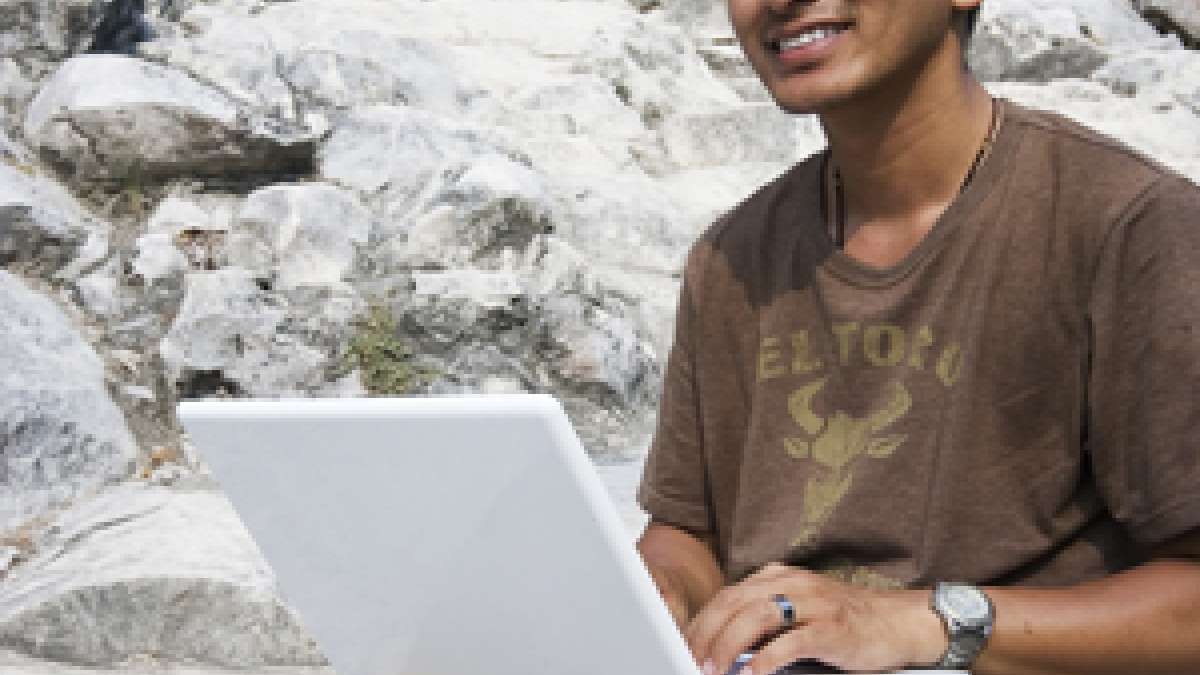Mayan culture, Spanish language focus of summer program in Mexico

With the "end of the world" averted on Dec. 21, 2012, the re-start date of the Maya Long Count calendar, students have the opportunity to learn more about Mayan culture and Spanish language firsthand this summer during the School of International Letters and Cultures' “Spanish Language and Mayan Culture in Yucatán” study abroad program.
The program takes place in Mérida, the capital city of the state of Yucatán in Mexico. Mérida, a pleasant colonial city with a tranquil lifestyle of modern-day conveniences, was named the "2011 City of Peace" for its unmatched safety record. The city is located a half hour bus trip from the beach town of Progreso, and about three hours from the resorts of Cancun and Playa del Carmen.
During the five-week program, students reside with carefully selected host families in Mérida. Yucatecans are some of the friendliest people in the world, and it is common for students to be treated as family during their stay. In addition to providing three home cooked meals a day, the families provide students with a Spanish immersion opportunity, which helps to improve Spanish fluency and develop a unique cultural understanding of Yucatán culture.
Mayan scholar, and ASU professor Manuel Hernández teaches courses on Spanish conversation, composition, literature and Mayan culture during the program. Hernández has worked at length with Mayan immigrants in Arizona, and has been professionally connected to the Universidad Autónoma de Yucatán (UADY), where program classes are held, since 1991.
In addition to coursework, students in the program visit world-renowned archaeological sites in Mexico on guided excursions, including the UNESCO World Heritage area of Chichén-Itza and the ancient Mayan cities of Tulum and Uxmal.
Students also visit the beautiful Ría Celestún Biosphere Reserve, home to a very large population of flamingos, Xcaret Eco Park, an eco-tourist theme park with several wildlife pavilions, a coral reef aquarium, a Mexican cemetery, museums, and cultural performances including a pop musical opera that includes a re-enactment of a historic Mayan ball game, and the unusual underwater sinkholes of the area, which the Mayas called dzonot, and which the Spaniards translated into cenote. Sacred entrances to the underworld, the cenotes were once the only resource for fresh water for the Mayas in the Yucatecan jungle.
In addition, students visit the Izamal monastery, and the Playa del Carmen in the Riviera Maya, which offers shopping centers, cultural recreation activities, as well as an array of traditional Mexican and international cuisine.
Prior to departure on May 24, Hernández and the program staff will hold two orientations for study abroad students. These orientations will help participants prepare for the trip covering topics such as: the departure for Mexico and travel within the country, life in Mérida and living with host families, expected behavior, money exchange, ASU classes, as well as tropical illnesses and how to avoid them on the trip.
The School of International Letters and Cultures’ study abroad programs are among the longest running and most prestigious at Arizona State University. Founded in 1981, and directed by knowledgeable, world-class faculty, the programs offer students the opportunity to experience and study international humanities and learn languages firsthand while earning credit toward their degree.
For more information about the “Spanish Language and Mayan Culture in Yucatán” program, contact Manuel Hernandez, or join us at our study abroad fair from 11 a.m.-2 p.m., Feb. 5, in Old Main on the ASU Tempe campus.
Applications accepted through the ASU Study Abroad Office
Story by School of International Letters and Cultures communication intern Alison Graham.